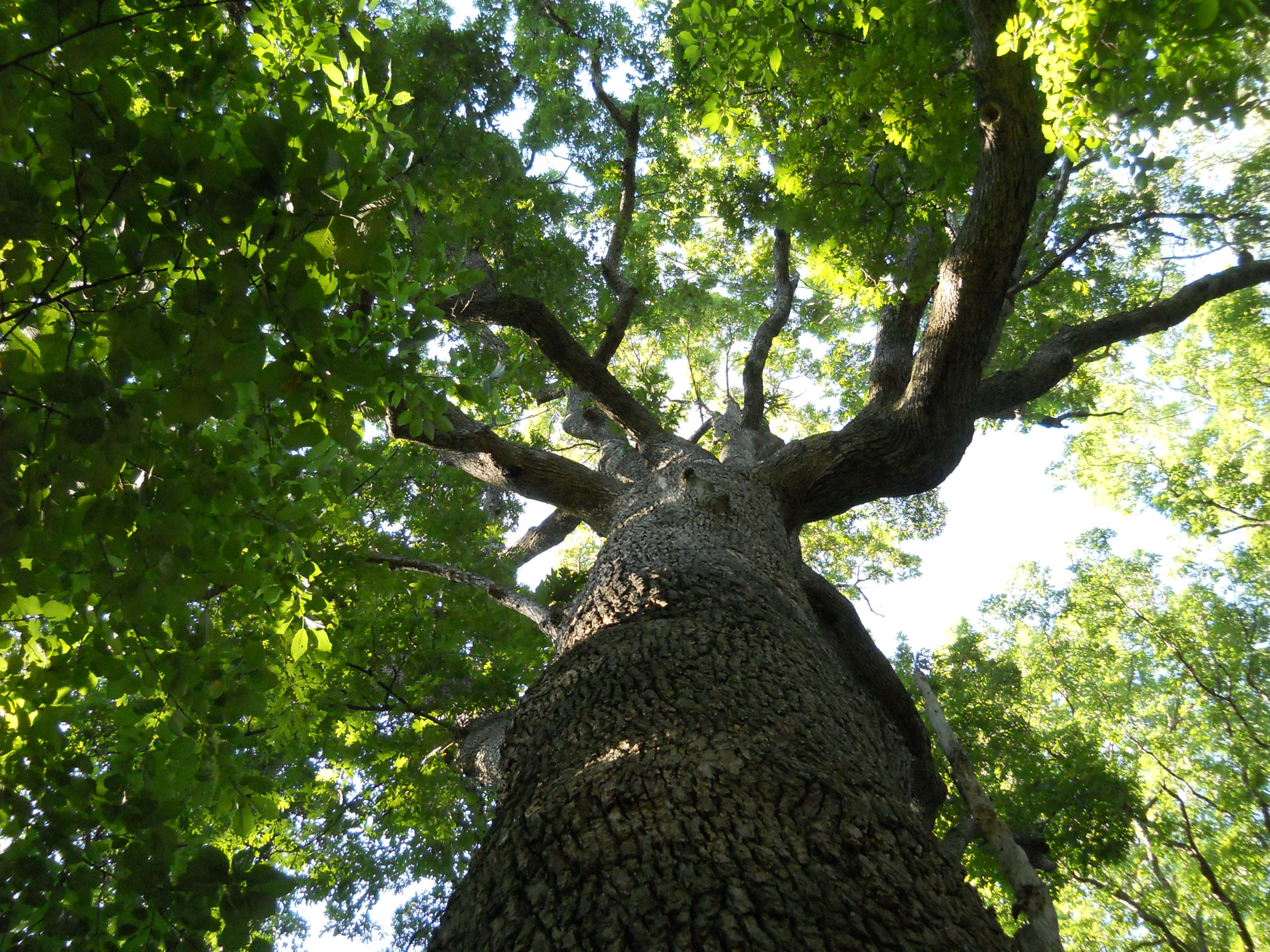Stadium Woods: Natural heritage in the heart of Virginia Tech's campus

For well over 200 years, regal oaks have stood on a knoll that now borders Virginia Tech’s Lane Stadium. The 57 ancient oaks, each measuring more than 3 feet in diameter, form part of a unique, old growth forest in the heart of campus.
Latin American students visiting the university’s Cranwell International Center adjacent to the 20-acre Stadium Woods find the same migratory songbirds they hear back home. Besides hooded warblers, vireos, and some 62 other species of birds identified on the site, a pair of nesting Cooper’s hawks has been spotted there.
The small forest serves as a sort of rest stop and cafeteria for migrating birds. Local birdwatchers consider the woods an excellent spot for adding species to their lifetime lists.
“When the birds come here in the spring and fall, they’re hungry and underweight from their long journey,” said Sarah Karpanty, associate professor of wildlife in the College of Natural Resources and Environment. “They may stay at Stadium Woods for a day or for weeks.”
John Seiler, Alumni Distinguished Professor in the college, who has been conducting forestry labs in Stadium Woods for years, has permanent plots set up and tagged for regular tree measurement and identification exercises. If Stadium Woods did not exist, he would have a difficult time teaching some of his courses because transporting students to a public forest outside of town would consume the entire 50-minute class period.
“Stadium Woods is a true forest right on campus,” Seiler said. “Although we have trees and even groves around campus, Stadium Woods has the whole ecosystem, with a forest understory populated with plants, insects, and other creatures.”
In a spot surrounded by pavement and concrete buildings, Stadium Woods absorbs rainwater and cools the vicinity in summer. The 2009 Virginia Tech Master Plan Amendment identifies the site as an environmental and cultural greenway, defined as “a significant reservation of lands, waterways, tree stands, and cultural landmarks for future generations.”
Although Stadium Woods has remained relatively untouched during Virginia Tech’s 139-year history, married students were housed in trailers between the trees in one section during the enrollment explosion following World War II. Remnants of concrete sidewalks and porch foundations of “Cassell Heights” can be found in the woods just east of Cassell Coliseum.
Stadium Woods remains one of Virginia Tech’s best kept secrets. Jeff Kirwan, professor emeritus and forestry Extension specialist who co-authored the book “Remarkable Trees of Virginia,” has been exploring the woods for about 10 years. Impressed by what he saw, he persuaded the Virginia Master Naturalists to inventory the on site species. In addition to native species such as mayapple and black haw viburnum, they found invasive, nonnative species such as Asiatic bittersweet, English ivy, and multiflora rose, which need to be controlled. Kirwan enlisted the Virginia Tech Society of American Foresters Student Chapter, with help from the Virginia Tech Forestry Club and the honor society Xi Sigma Pi, to work on removing nonnative species at the site.
“The Virginia Tech Society of American Foresters Student Chapter was very excited to facilitate removal of invasive plant species this fall,” said Kyle Dingus of Warrenton, Va., a senior majoring in forest resource management in the College of Natural Resources and Environment and the chair of the student chapter. “We feel that restoring Stadium Woods to a natural state is a way to benefit the community and to help maintain a well-known ecological landmark. The chapter plans on continuing these efforts every year so that we can continue to support our community.”
The New River Valley Chapter of the Virginia Master Naturalists, the New River Valley Native Plant Society, and the New River Valley Bird Club have contributed a total of $1,500 for five signs to be posted in Stadium Woods indicating the ecological significance of the site.
“Stadium Woods is a natural heritage in the heart of Virginia Tech, a home to ancestral trees, and a refuge from the urban environment for birds and humans,” said Kirwan. “If people don’t realize how special it is, it will be used for other purposes. People need to think of it as the most historic thing we have in our community, more historic than any building or piece of paper. It is not only historic, it is alive.”
Written by Andreza Silva de Andrade, an environmental reporter from Brazil who interned with the College of Natural Resources and Environment while on a Humphrey Fellowship.







